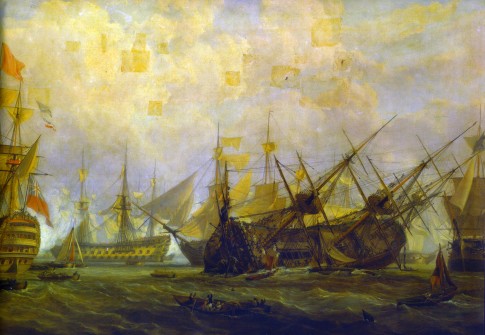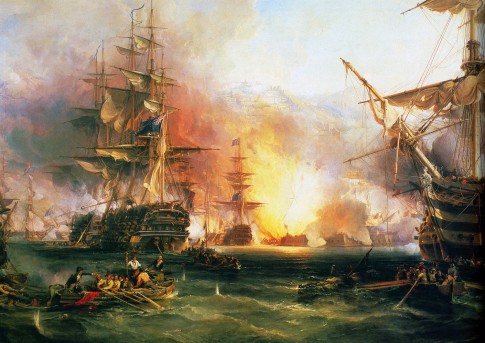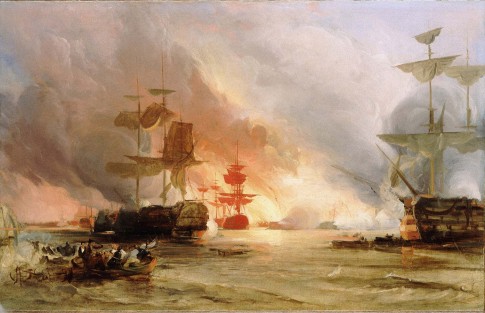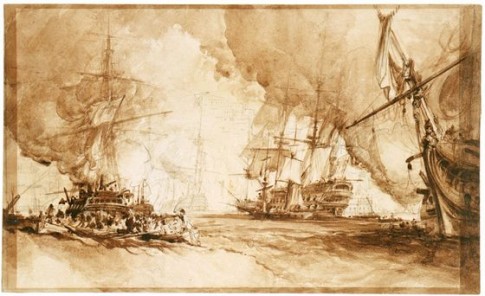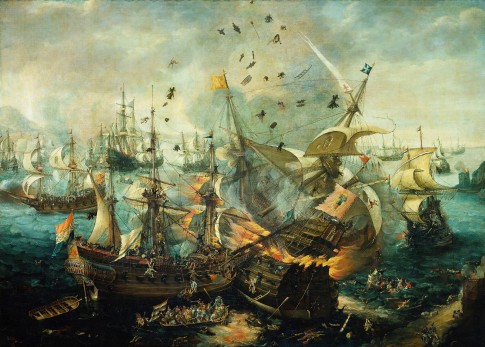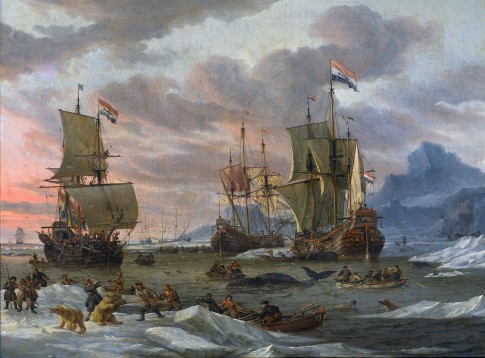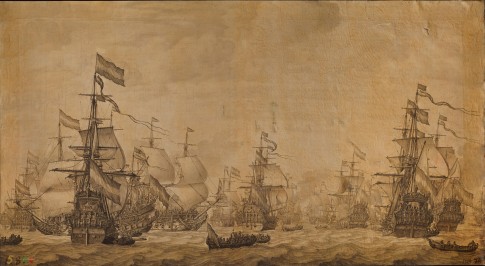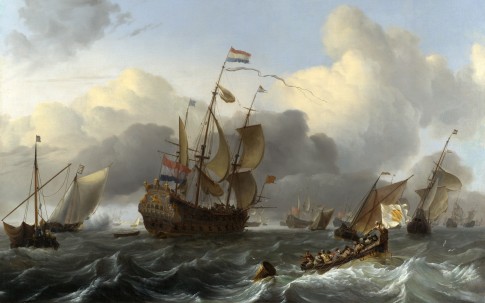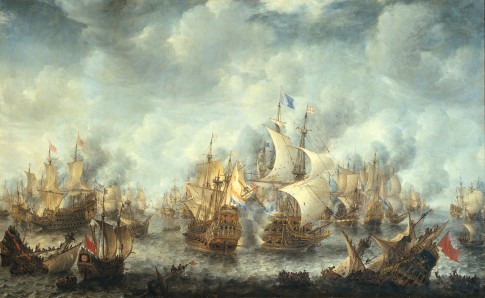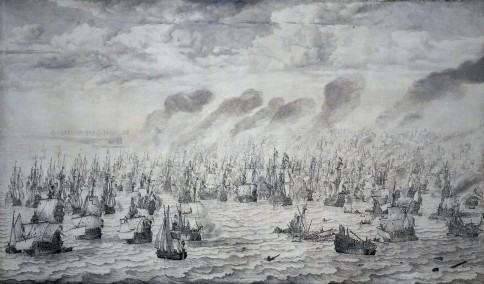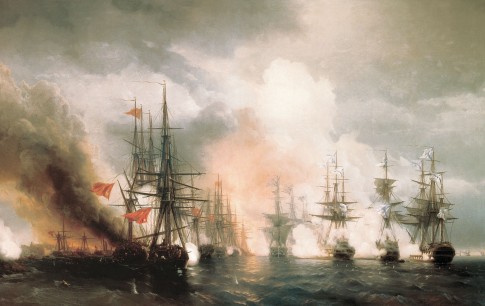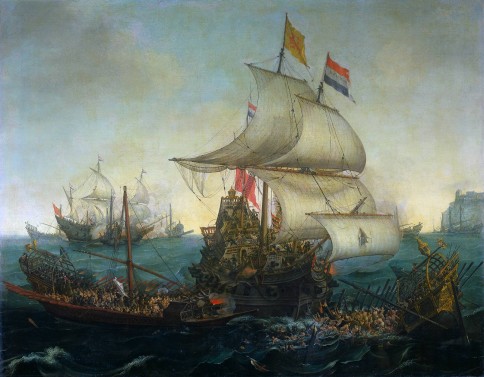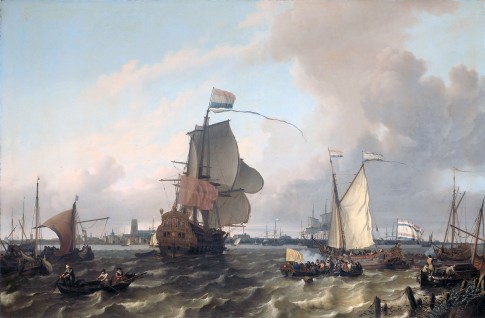The Loss of the Royal George by John Christian Schetky, c 1840
Tate Gallery, London
(image 3000 x2075 px, 3.74 MB)
On August 29 1782 Royal George, a magnificent 100 gun three-decker, suddenly sunk in the calm waters of Spithead. The catastrophe took lives of Rear Admiral Richard Kempenfelt and around 900 of the ship’s crew. A thorough investigation had identified the cause of the tragedy – corrosion of iron fastenings in the coppered hull. A few years before a comprehensive program of coppering ships was introduced by Charles Middleton, Controller of the Navy, and it had been completed by the end of the American War. But by 1782 it became clear that something was terribly wrong with the method used to fix copper layers to the wooden hull. For instance a report submitted by Captain Lord Robert Manners after the battle of Chesapeake reads:
We felt severely the danger of keeping coppered line of battleships long out without looking at their bottoms, as the Terrible, one of the finest seventy-fours we had, by her exceeding bad state even before she left the West Indies, and by firing her own guns, and the enemy’s shot in the action, was found in so desperate a state that she was ordered to be scuttled and set on fire.
A number of ships sank suddenly a year or two after they had been coppered. The waterproof tarred paper seal placed between layers of copper and the hull was believed to prevent the rotting of timbers. But the iron fittings were the real cause of the corrosion due to the electrolytic effect. At a considerable cost the entire fleet had to be docked, and the iron fittings had been replaced with ones made out of hardened annealed copper.
